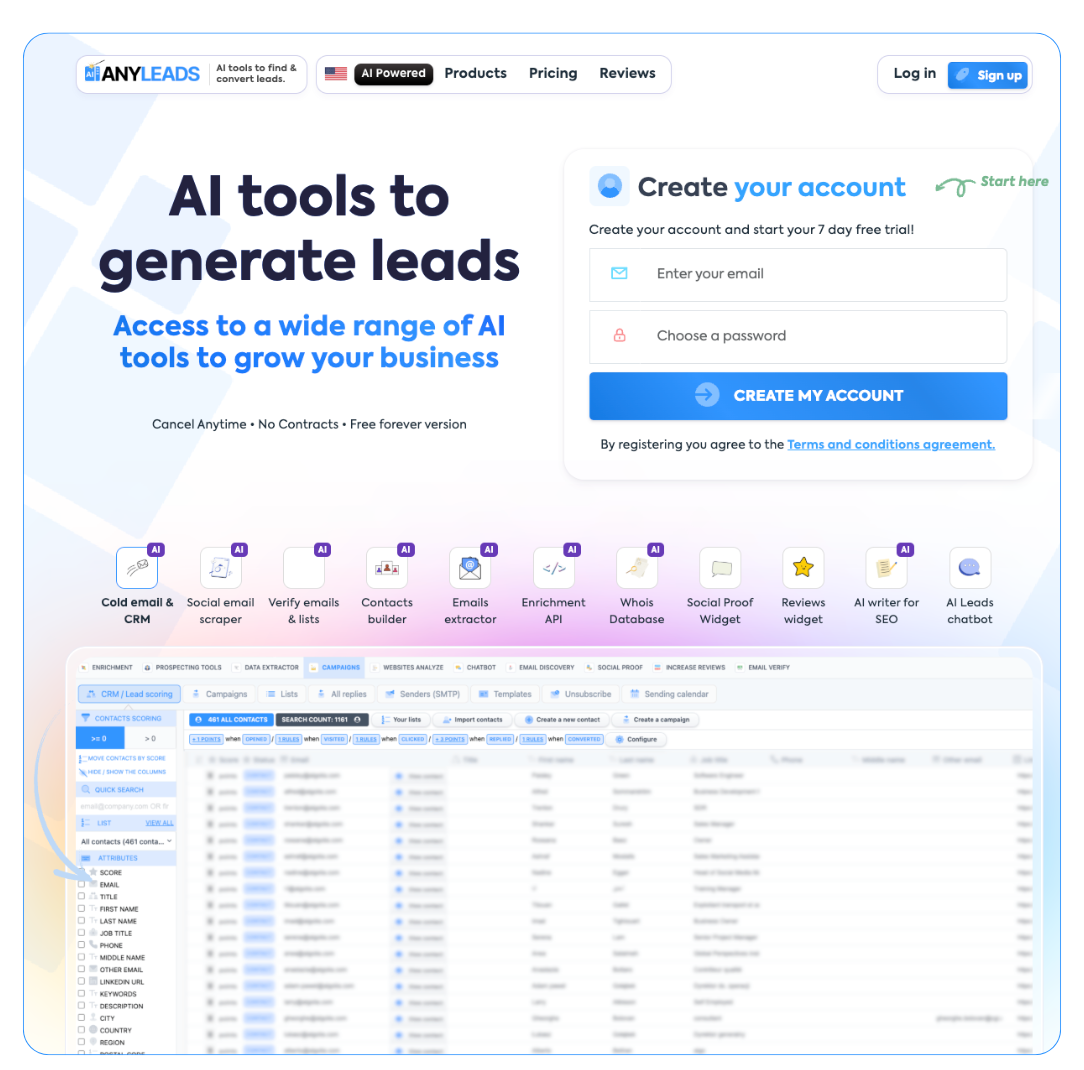 LIMITED SPOTS
All plans are 30% OFF for the first month! with the code WELCOME303
LIMITED SPOTS
All plans are 30% OFF for the first month! with the code WELCOME303

 LIMITED SPOTS
All plans are 30% OFF for the first month! with the code WELCOME303
LIMITED SPOTS
All plans are 30% OFF for the first month! with the code WELCOME303


Your pipeline grows faster when skills improve where work actually happens, the inbox and the dashboard. Cold emails convert better when lists are clean, offers are clear, and follow ups stay consistent. Campaigns also move smoother when sales and marketing share the same definitions for leads and qualified stages.
If you want a proven path, accredited learning helps you build repeatable habits without guesswork or wasted time. Many professionals start with structured marketing courses singapore to anchor practice in clear goals and assessments. From there, you can add playbooks for outreach, analytics, and content that feed your lead engine. The plan below keeps the focus on skills that ship work every week.

Photo by Canva Studio
Start by tracing a lead from first touch to booked meeting, then mark the skills each step needs. Prospecting needs research and list building, email needs copy that prompts replies, and social posts need clear calls. Analytics keeps score fairly, so the team sees what moves and what stalls.
Write one measurable skill target for every pipeline stage, then schedule a practice block for each item. Keep the goals plain so progress is obvious and quick to review with your manager. Example targets include reply rate, meeting rate, and cost per qualified lead on two channels.
When training relates to funding support, check your eligibility and claim process before booking any course. In Singapore, SkillsFuture explains credits, approved providers, and how claims work for adult learners. Their site outlines requirements and timelines with plain steps that reduce admin errors for first time users.
Short projects help new skills stick because they face real constraints and timelines. A five day micro project beats a month of scattered reading and half finished notes. Build something you can launch, measure, and archive for later review during one focused week.
Pick one channel and one clear outcome, then scope the work to fit your week. You might write a three email sequence, rebuild a contact form, or design a referral offer. Ship the work, track the result, and log the lesson so your next effort begins stronger.
Use a simple template to keep projects consistent and quick to repeat across quarters. Capture the audience, offer, channel, timeline, and metric in a single page file. Store results in a shared drive so sales and marketing can reuse winning assets without delay.


Dashboards only help when numbers stay clean and definitions stay stable. Agree on what counts as a reply, a meeting, and a qualified lead across teams. Freeze those definitions for a quarter so your charts show real movement rather than shifting labels.
Many teams run a weekly rhythm that pairs light analysis with a single small improvement. The meeting reviews reply rate, win rate by source, and spend per booked meeting. Then the group picks one action, like rewriting a subject line or tightening a form field.
A simple operating cadence helps people apply training without adding meetings to crowded calendars. Try this pattern each week for eight straight weeks, then review patterns and promote what worked. Small, steady wins compound faster than occasional big pushes that stall after month one.
AI helps research targets, draft outlines, and sort replies, but guardrails protect your brand and inbox. Start by writing usage rules that cover data sources, message tone, and approval steps. Keep human reviews in the loop where errors might harm trust, like pricing or compliance terms.
Here are three fast ways to use AI while keeping quality high and risk low:
Summarize prospect websites into short notes for call prep on named accounts.
Draft alternate subject lines that stay within character limits and match house style.
Tag inbound replies by intent, then route meetings faster with simple rules.
If your outreach involves endorsements or testimonials, follow disclosure rules that apply to your market. The Federal Trade Commission publishes plain language guides that explain clear, prominent, and accurate disclosures. Review the latest FTC guidance on endorsements and marketing claims, then mirror those practices across channels. Good habits here save time later when audits or partner reviews arrive.
Most outreach fails because the first lines make reading feel like work rather than help. Start with one clear pain or outcome, then connect it to a simple next step. Keep paragraphs short, verbs active, and jargon out so people glide to the reply button.
Write three versions of every opener, then pick the strongest after a quick peer review. Read lines aloud to catch rough spots that slow the eye and tire the reader. Trim excess words and swap complex terms for everyday language that matches how your buyers speak.
Collect winning snippets in a shared library so everyone stops rewriting the same lines weekly. Tag each entry by industry, role, and problem so search stays fast during busy hours. A living library saves energy and keeps tone consistent across people and campaigns.


SEO rewards consistency over clever tricks that fade after one update. Start with clean technical checks, fast pages, and descriptive titles for every asset that matters. Then build topic clusters that answer real questions your buyers ask during research and evaluation.
Create a short checklist to use before publishing any article or landing page this quarter. The list can cover search intent, primary keyword placement, internal links, and schema markup. A repeatable checklist helps teams catch issues early and keep standards steady under pressure.
Track organic leads by page group so you see which topics earn attention and meetings. Compare search terms in winning leads against the terms that drive views without action. Then adjust content plans toward pages that both attract and convert, not just visits that bounce away.
Skills stick when they show up in your weekly work and your quarterly review. Save before and after examples for short projects and outreach lines that moved results. Bring those artifacts to one on one meetings so growth stays visible and easy to reward.
Pair coursework with visible outcomes that matter to the business right now. If you study analytics, rebuild one dashboard that leadership checks every Monday morning. If you study copy, raise reply rates on one segment with a tested subject line vault.
Mentor someone newer once you have a repeatable habit that works on real tasks. Teaching clarifies steps, surfaces gaps, and strengthens your own standard for quality. The habit also grows your influence because people trust teammates who help them ship steady work.
Progress comes from short steps that repeat on a regular schedule, not heroic bursts. Pick one pipeline stage, one small project, and one weekly review that fits your calendar. Save before and after examples so growth is visible in meetings and reviews. Stick with the rhythm for eight weeks, then keep what works and retire what drags.